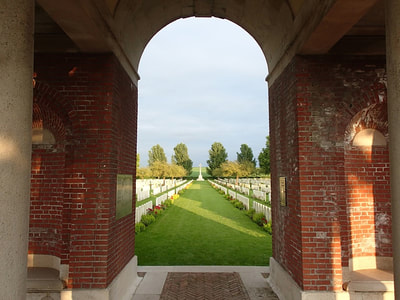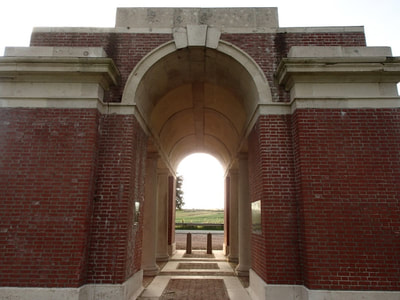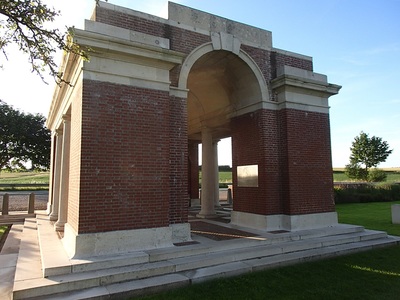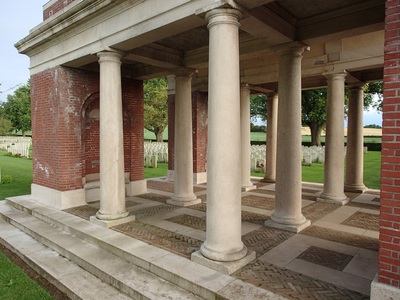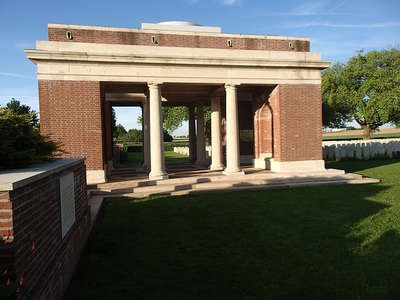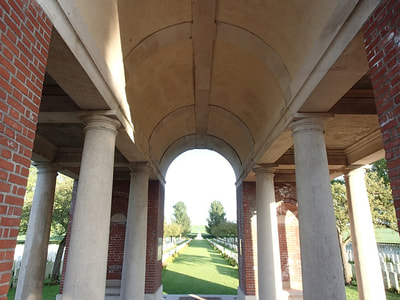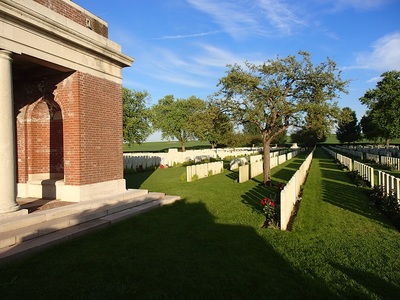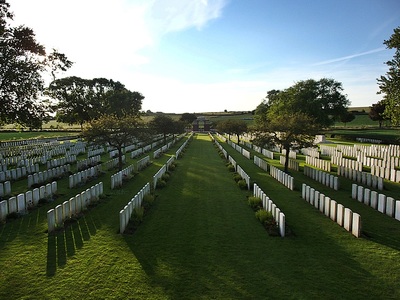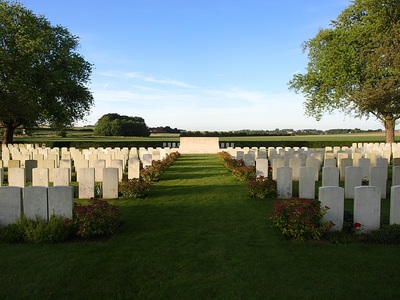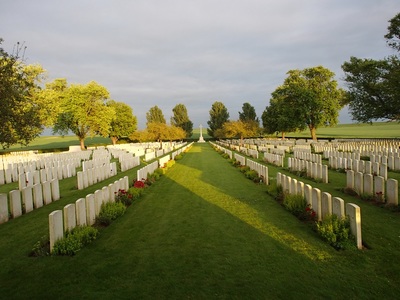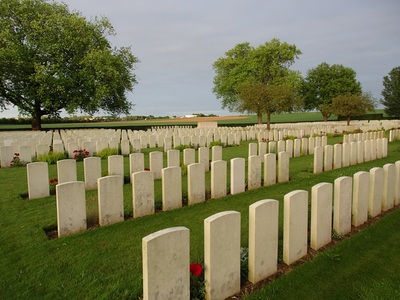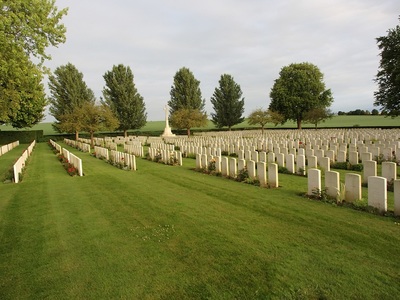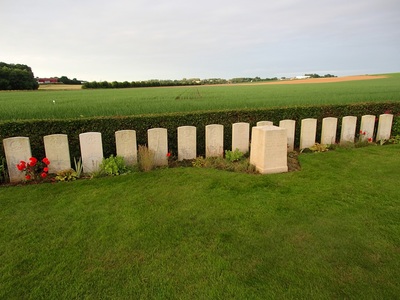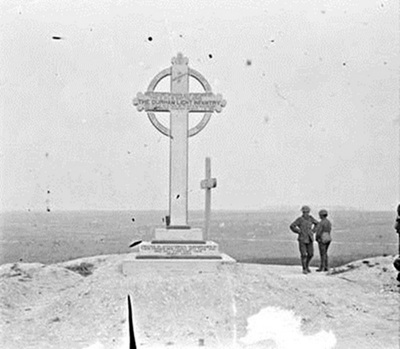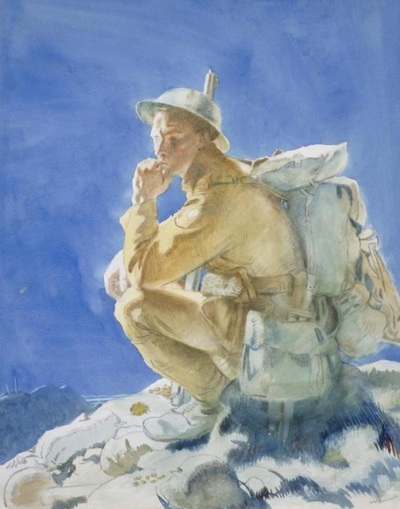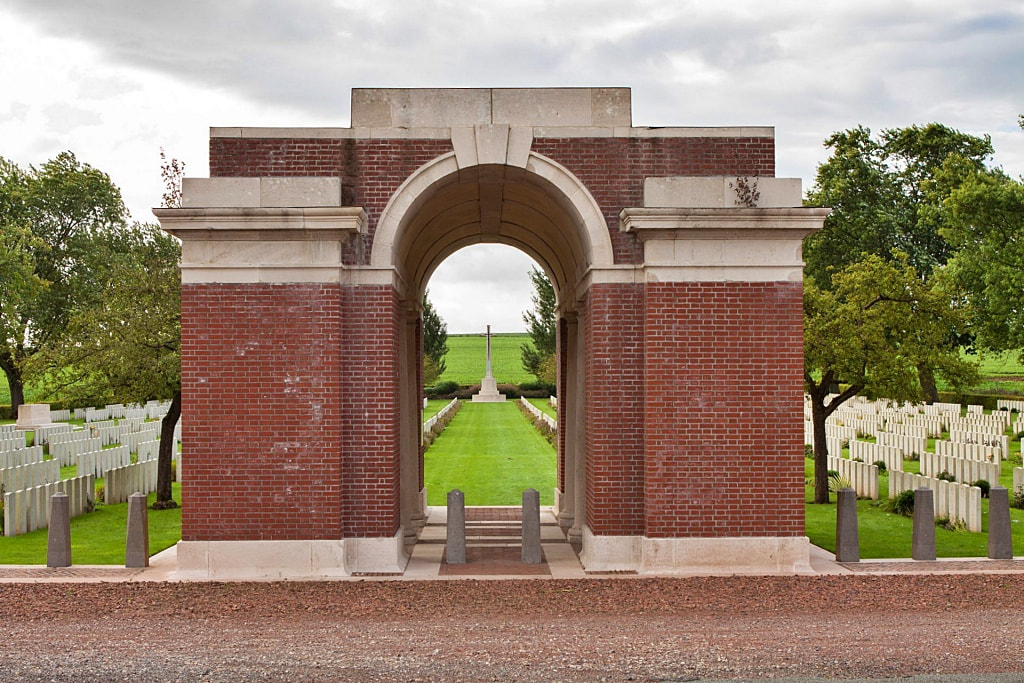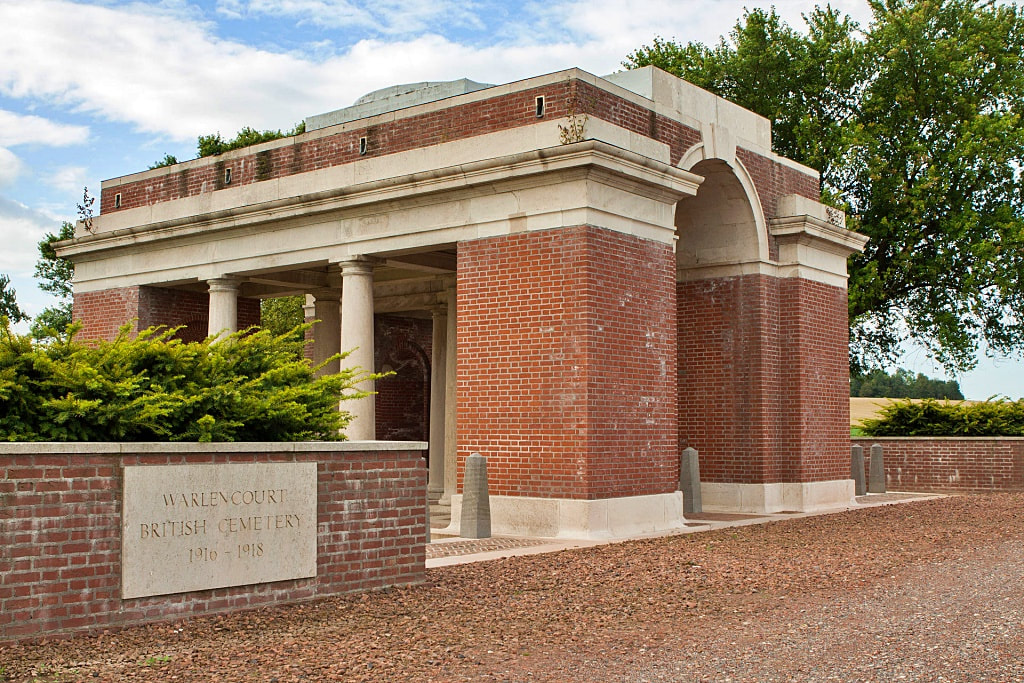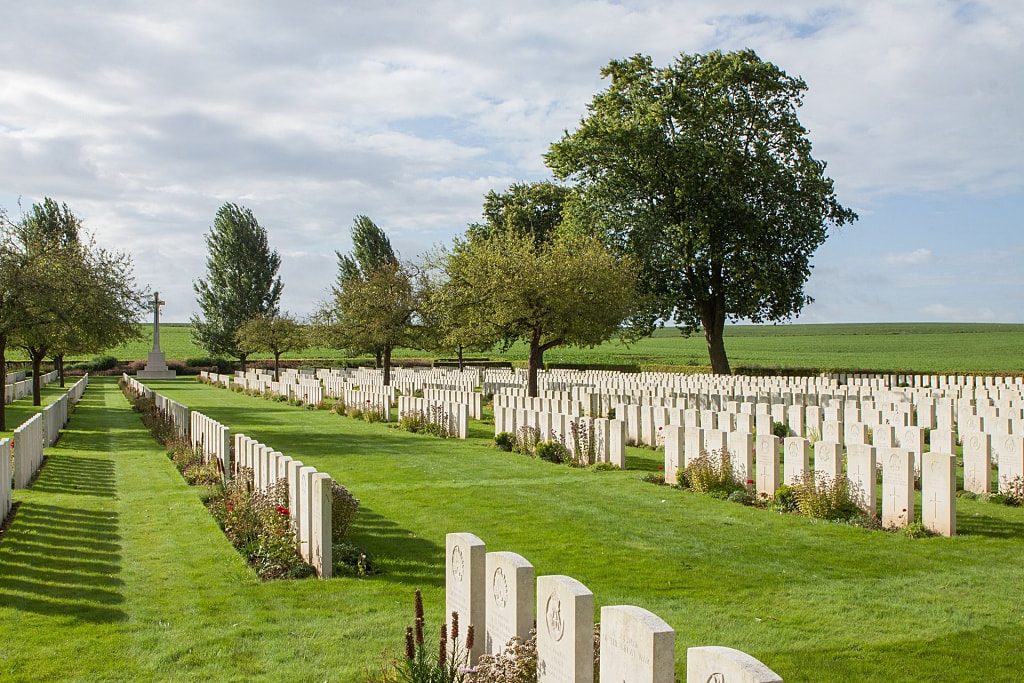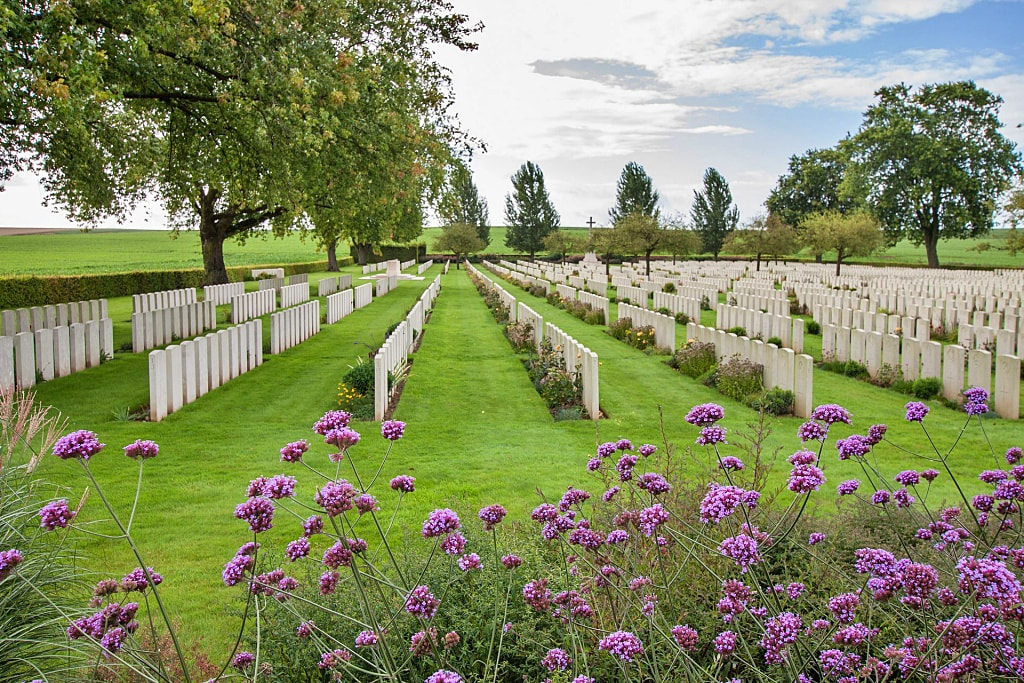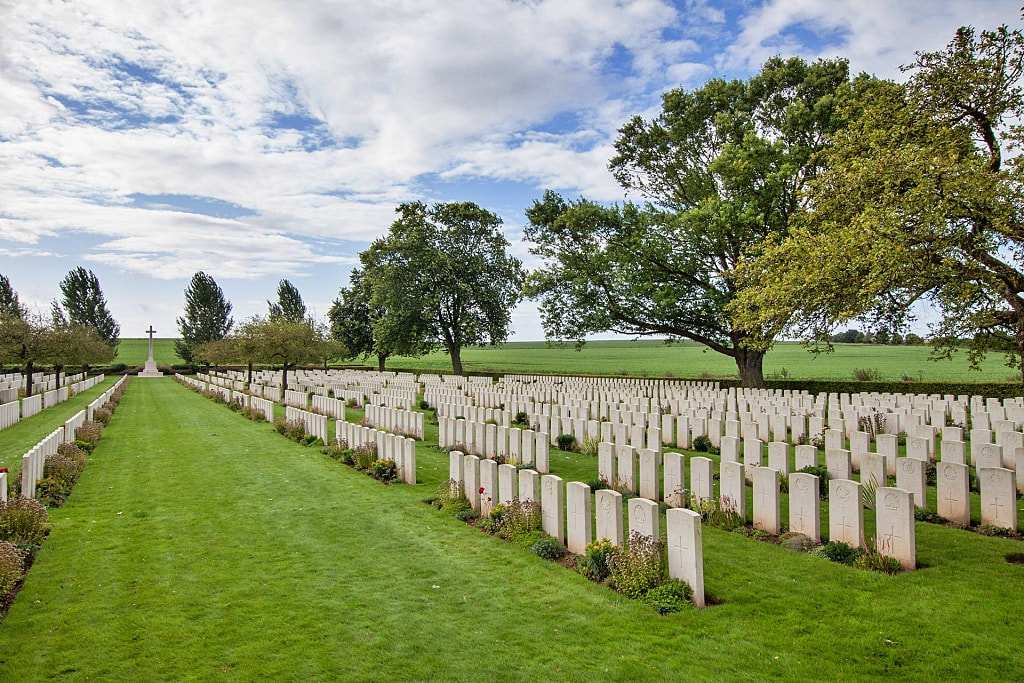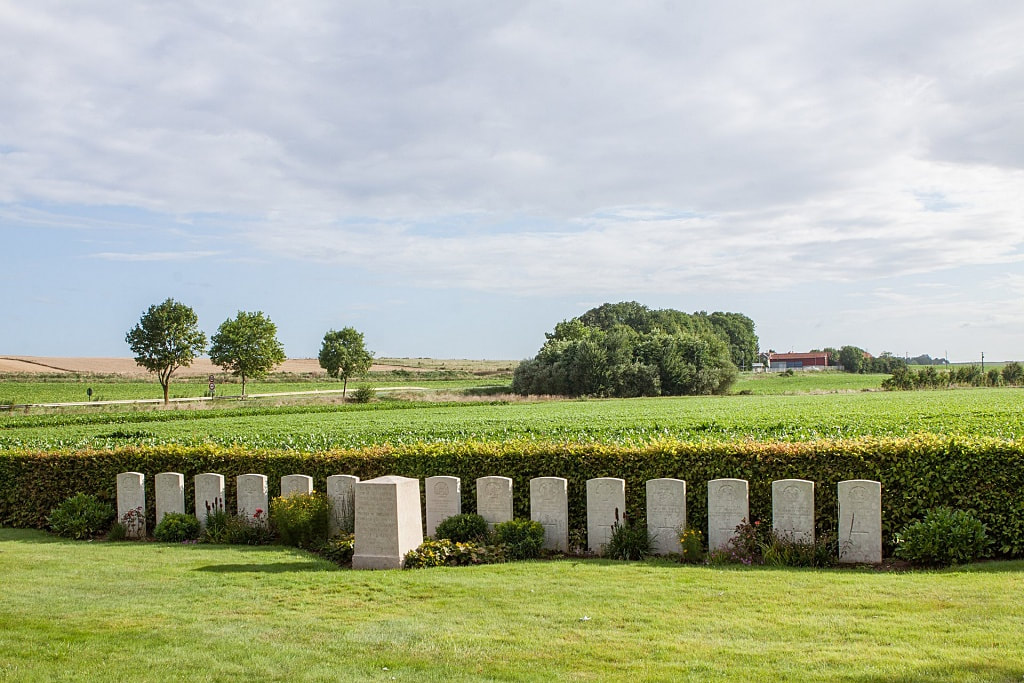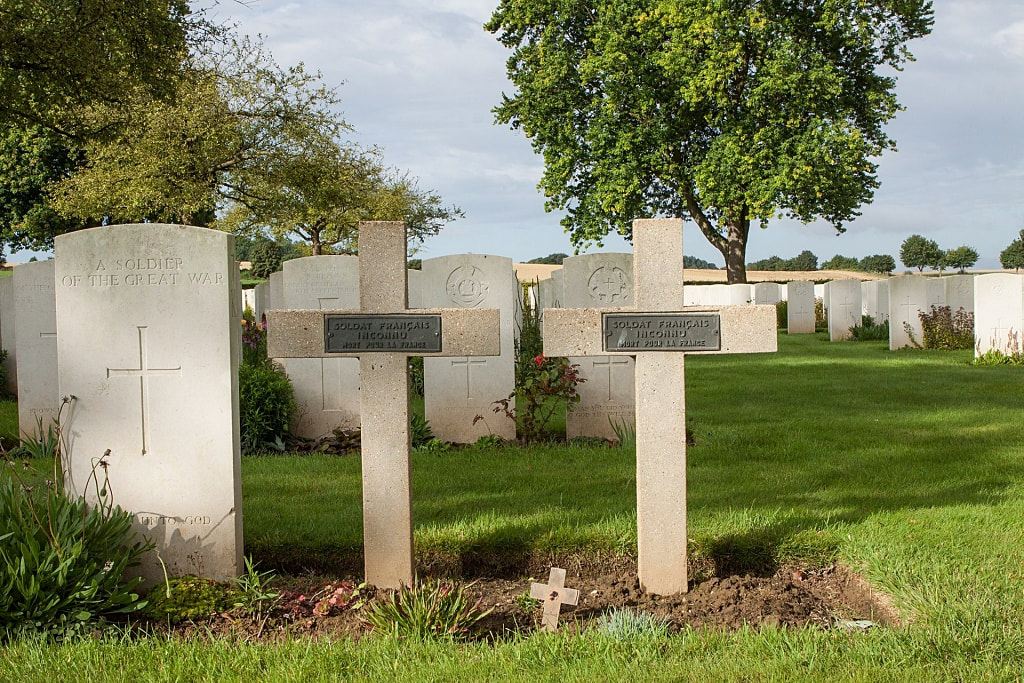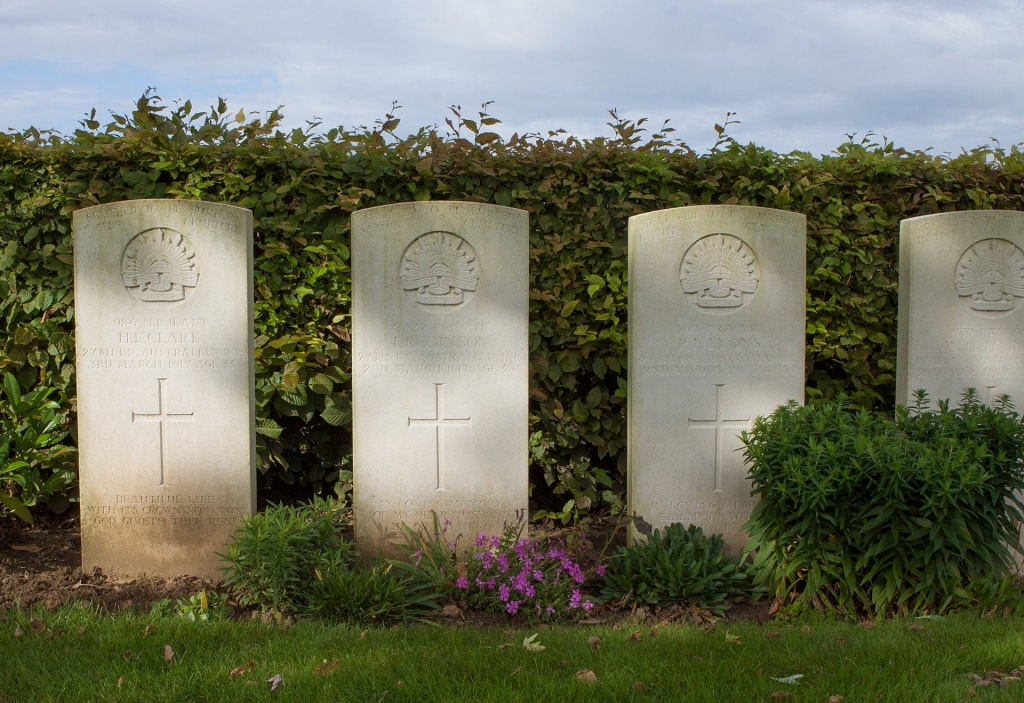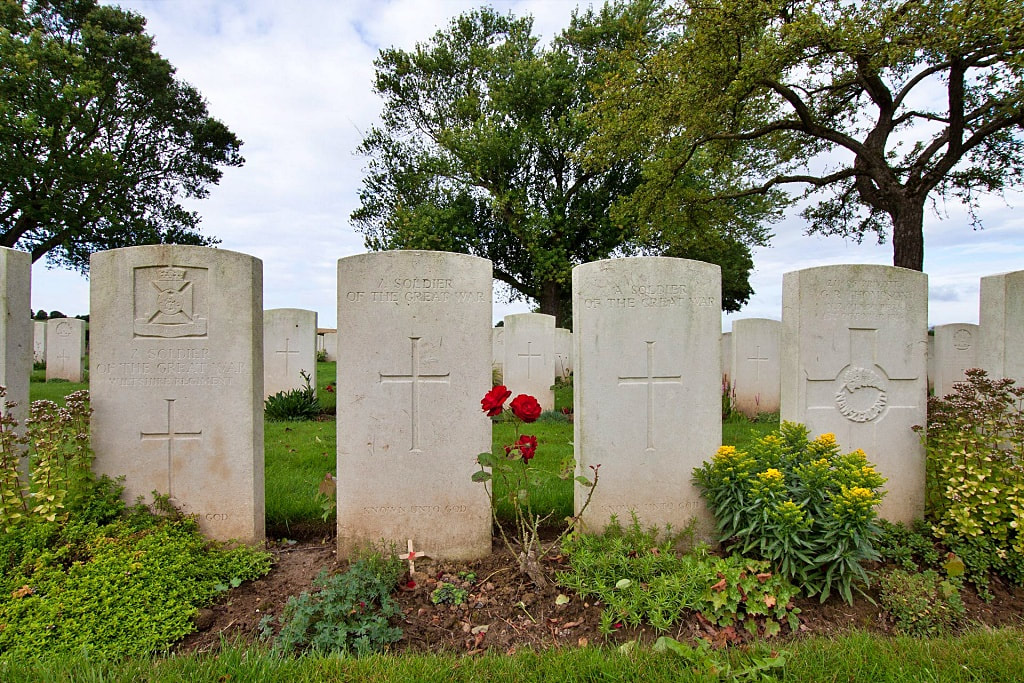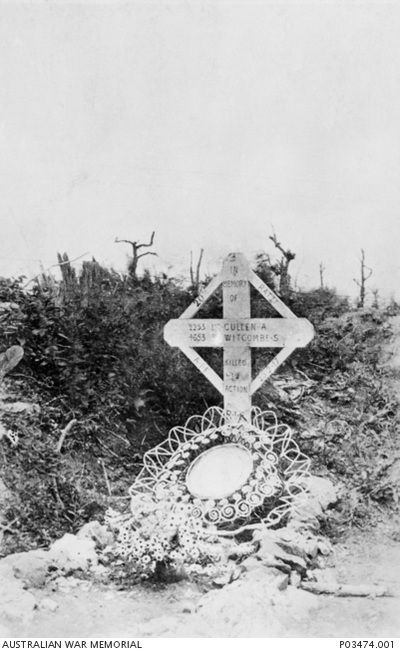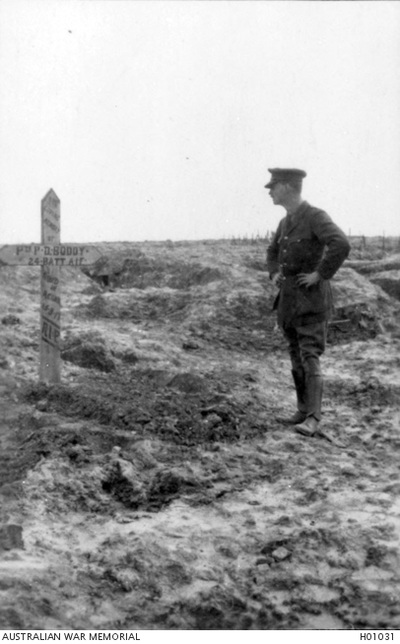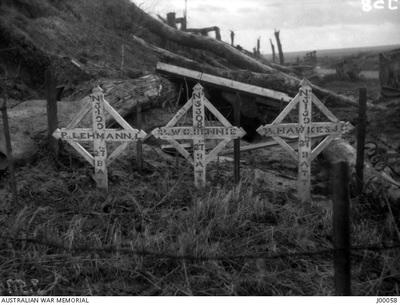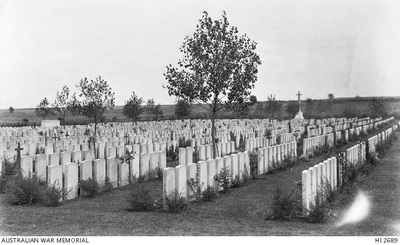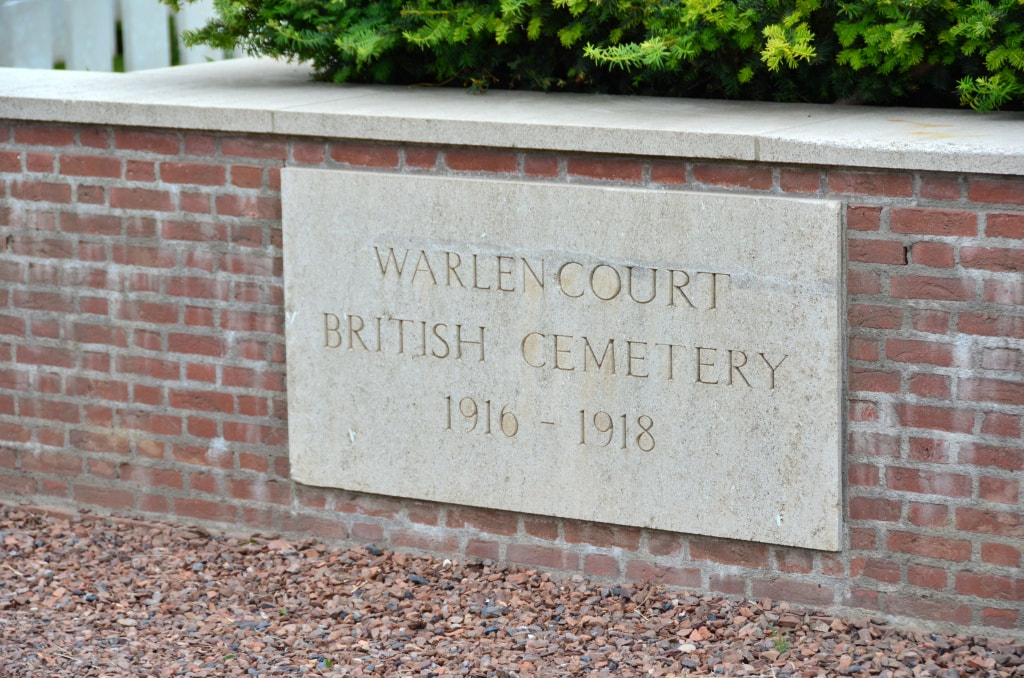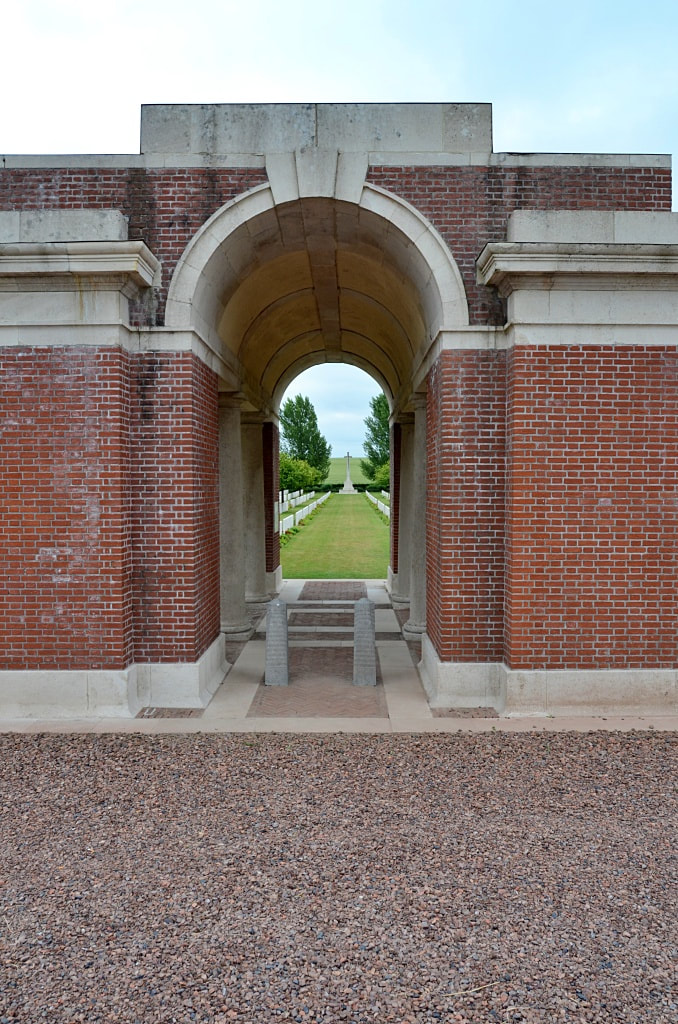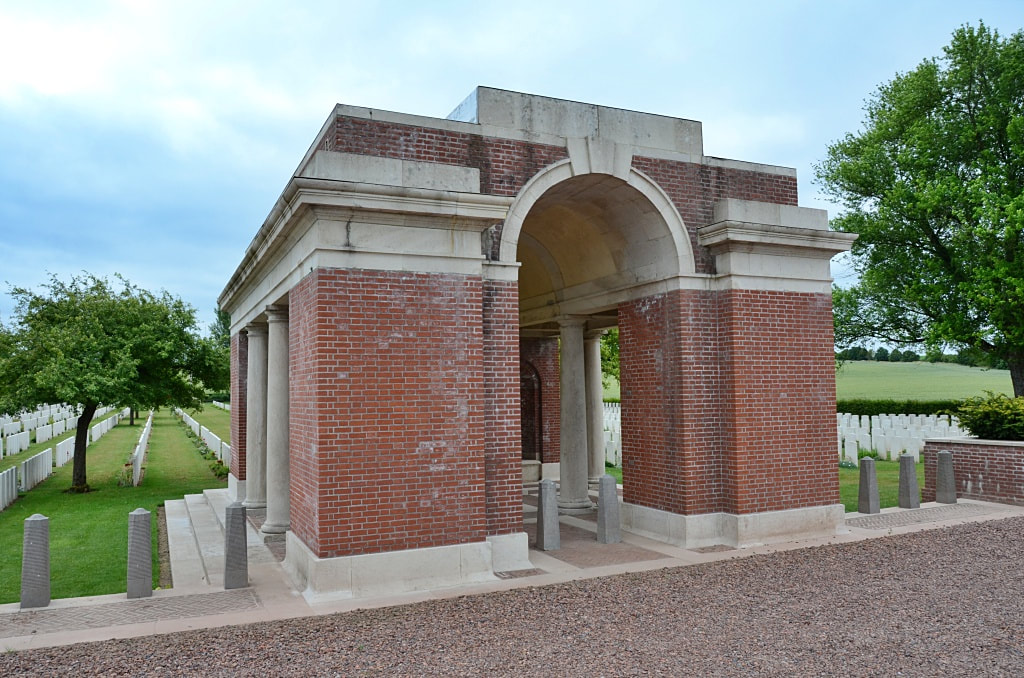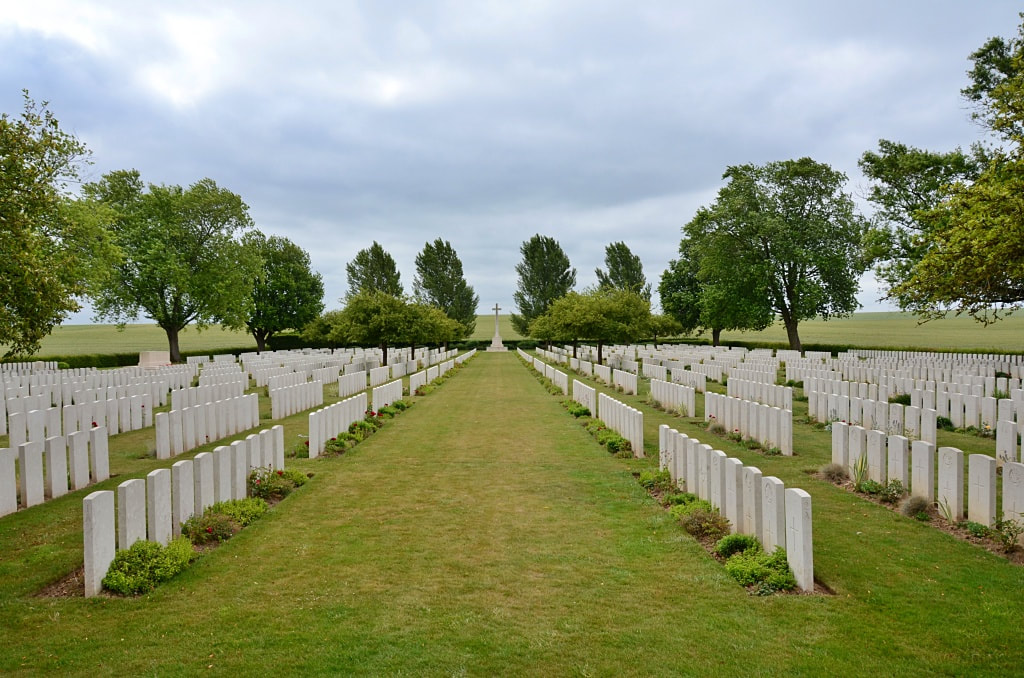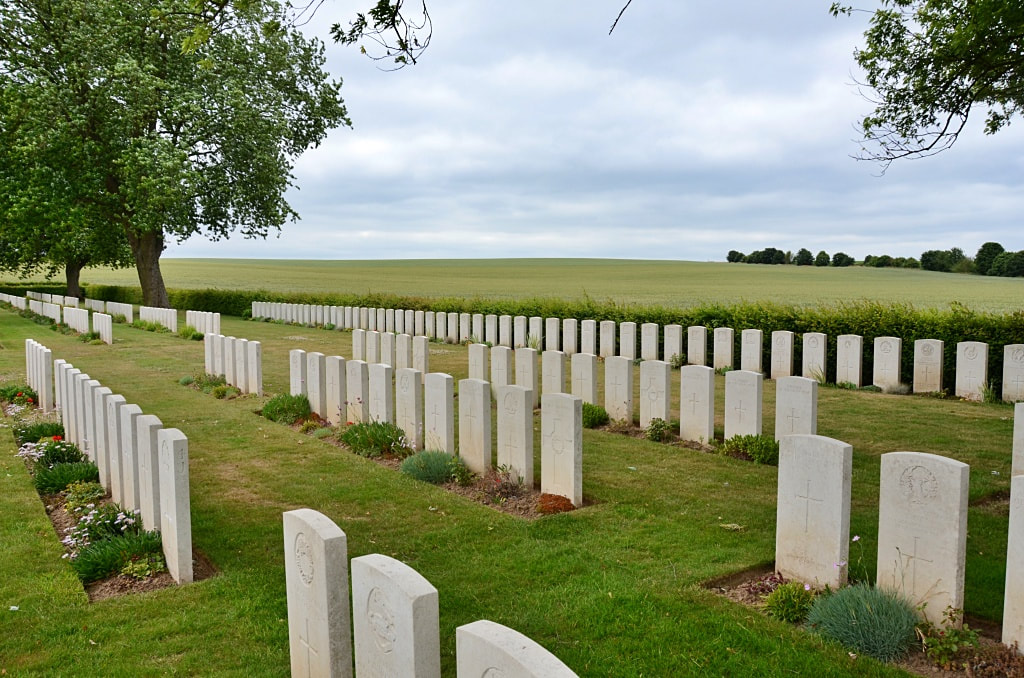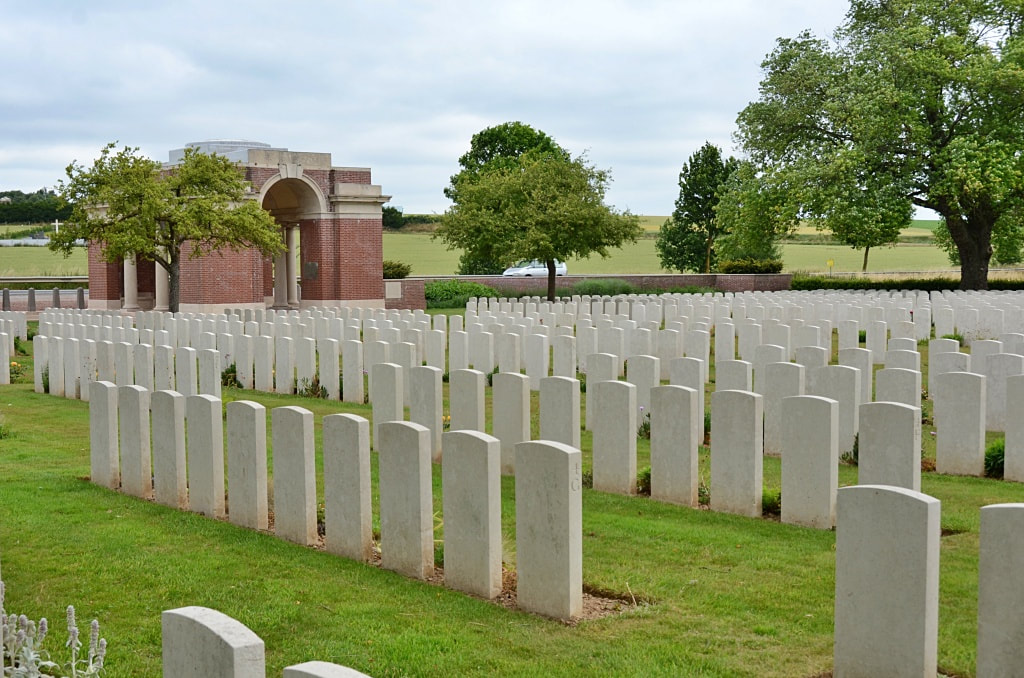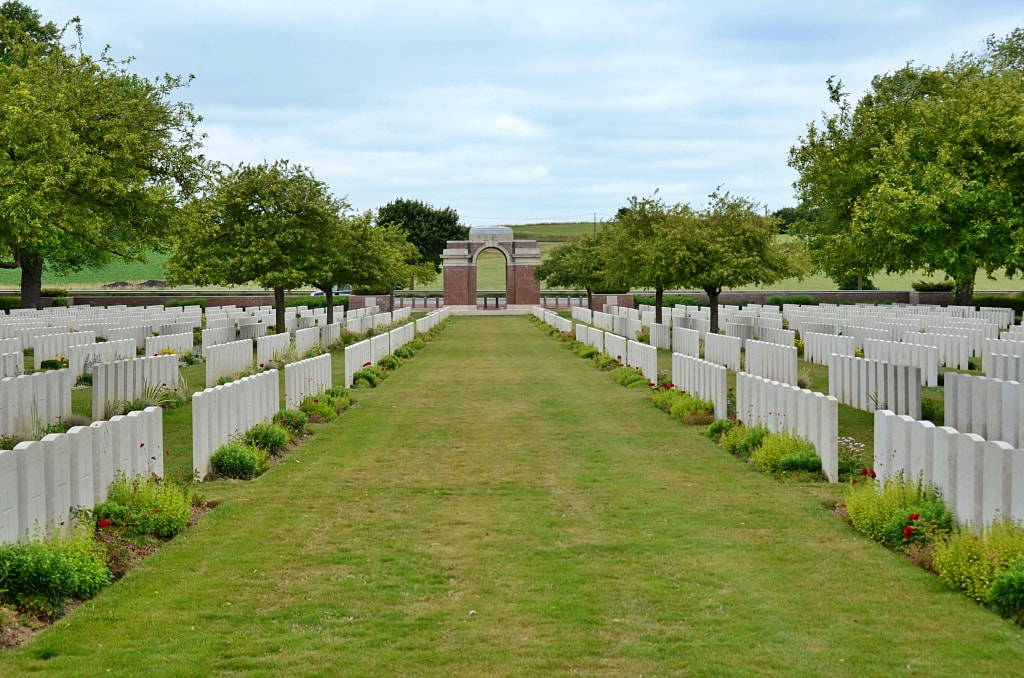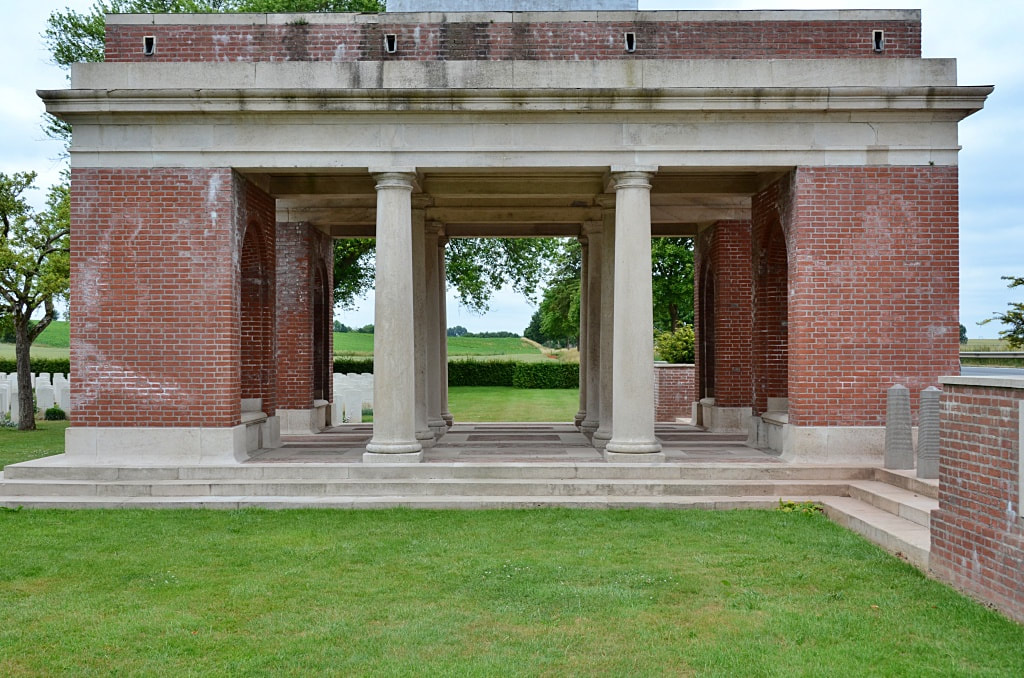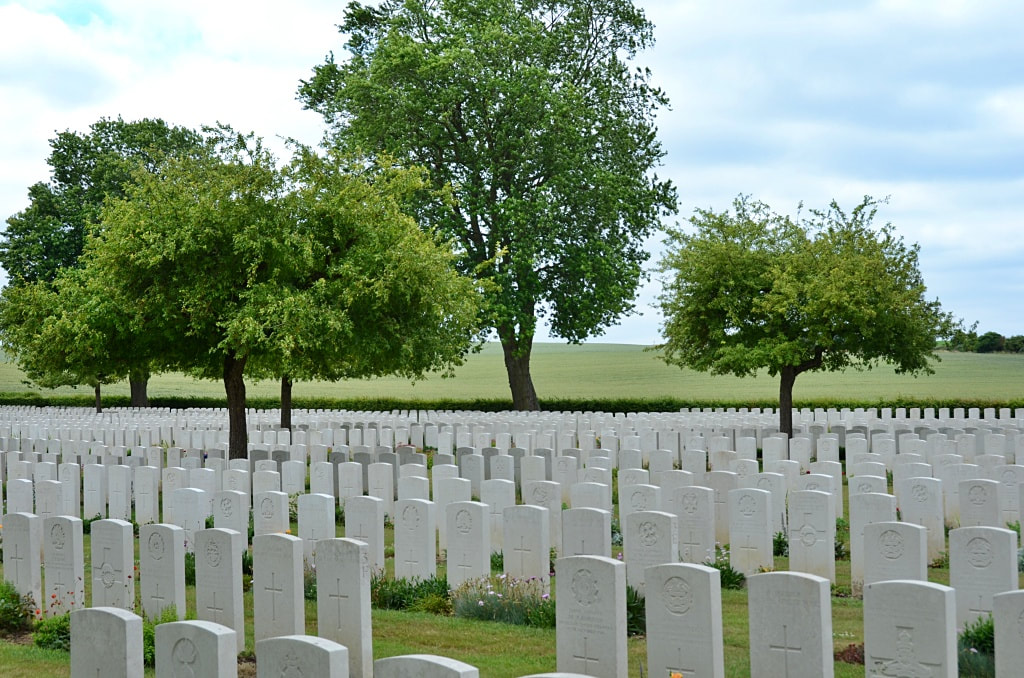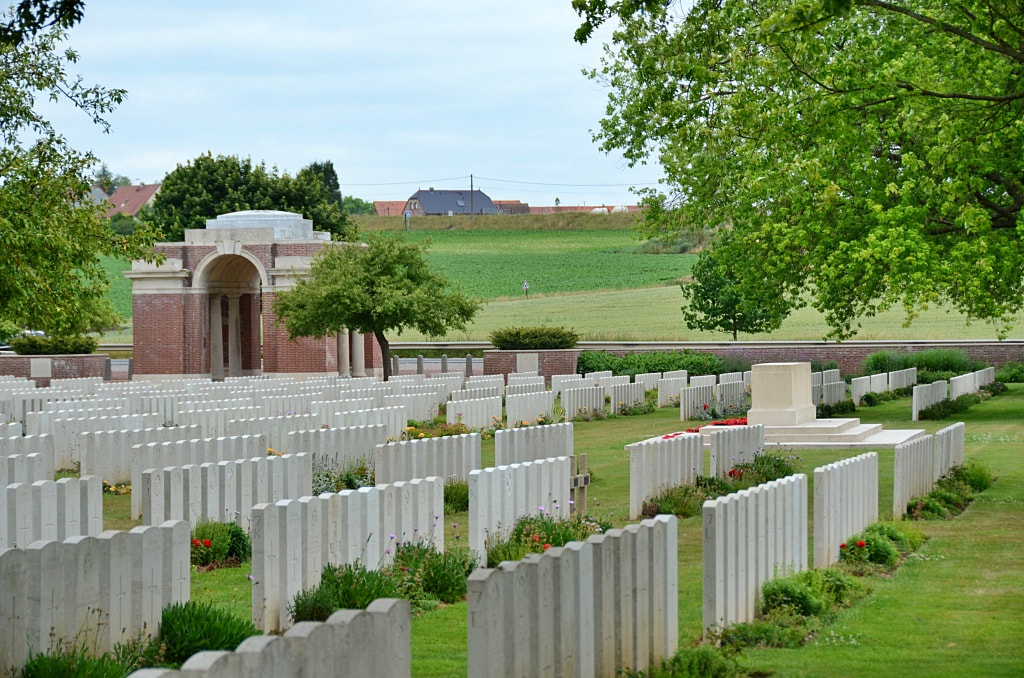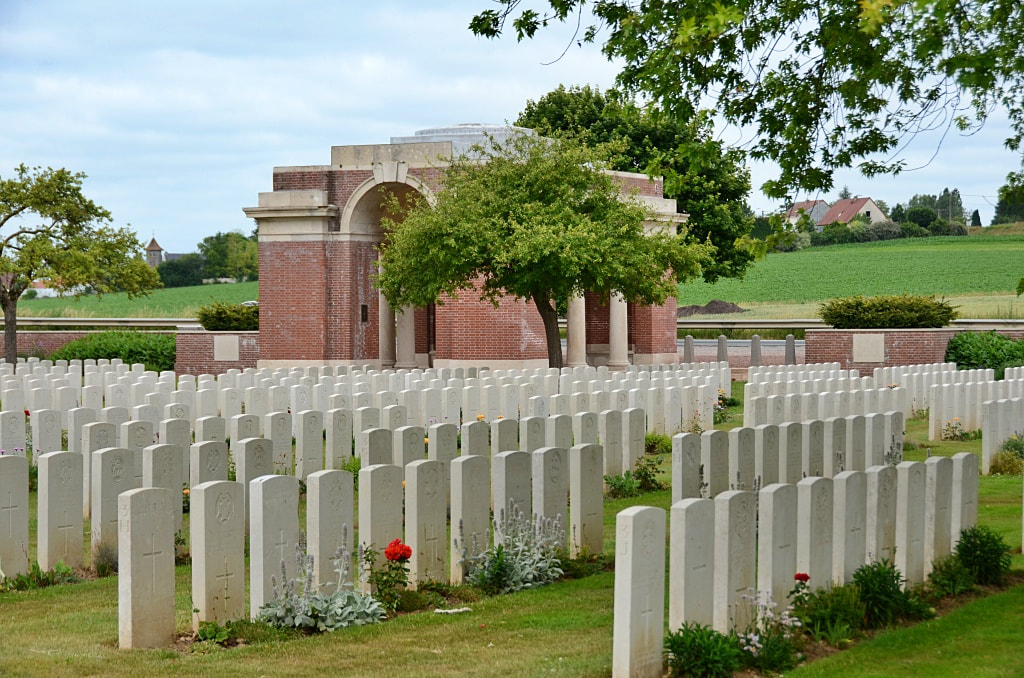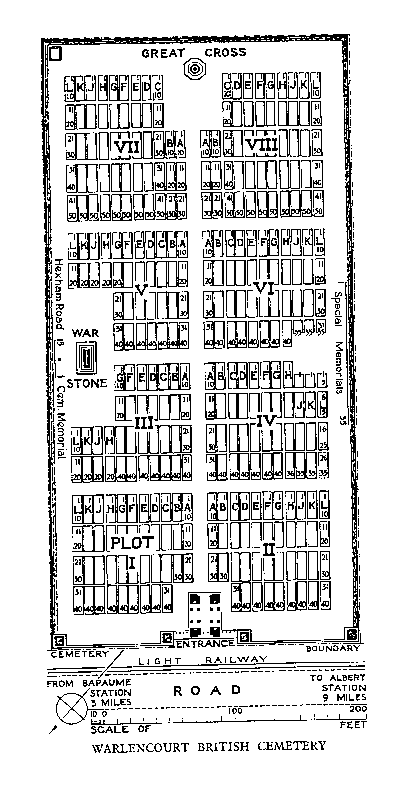WARLENCOURT BRITISH CEMETERY
Pas De Calais
France
GPS Coordinates" Latitude: 50.08079, Longitude: 2.79911
Roll of Honour
Listed by Surname
Location Information
Warlencourt British Cemetery lies on the east side of the D929, to the south-east of Warlencourt village and 5 kilometres south-west of Bapaume.
CWGC signposts on the D929 give advance warning of arrival at the Cemetery.
Visiting Information
Wheelchair access to the site is possible, but may be by alternative entrance.
Historical Information
Warlencourt, the Butte de Warlencourt and Eaucourt-L'Abbaye were the scene of very fierce fighting in 1916. Eaucourt was taken by the 47th (London) Division early in October. The Butte (a Roman mound of excavated chalk, about 17 metres high, once covered with pines) was attacked by that and other divisions, but it was not relinquished by the Germans until the following 26 February, when they withdrew to the Hindenburg Line.
The 51st (Highland) Division fought a delaying action here on 25 March 1918 during the great German advance, and the 42nd (East Lancashire) Division recaptured the ground on 25 August 1918.
The cemetery was made late in 1919 when graves were brought in from small cemeteries and the battlefields of Warlencourt and Le Sars.
The largest burial ground moved into this cemetery was:-
HEXHAM ROAD CEMETERY, LE SARS, on the West side of the Abbey grounds. (Hexham Road was the name given to the road leading from Warlencourt to Eaucourt. Le Sars was captured by the 23rd Division on 7 October 1916, and again by the Third Army on 25 August 1918.) This cemetery was used from November 1916 to October 1917, and contained the graves of 17 soldiers from the United Kingdom and 13 from Australia.
The cemetery now contains 3,507 Commonwealth burials and commemorations of the First World War. 1,824 of the burials are unidentified but there are special memorials to 55 casualties known or believed to be buried among them. Other special memorials commemorate 15 casualties buried in Hexham Road Cemetery, whose graves were destroyed by shell fire.
Total Burials: 3,507.
Identified Casualties: United Kingdom 1,183, Australia 339, South Africa 108, New Zealand 51, Canada 2. Total 1,693.
Unidentified Casualties: 1,824.
The cemetery was designed by Sir Edwin Lutyens and George Hartley Goldsmith
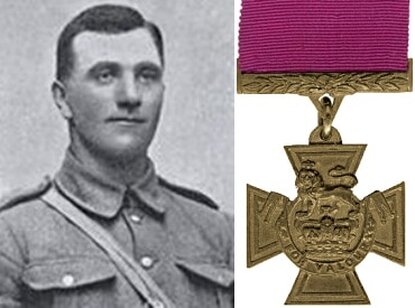
Sergeant
Donald Forrester Brown V. C.
2nd Bn. Otago Regiment, New Zealand Expeditionary Force
killed in action 1st October 1916 aged 26,
Plot III. F. 11.
Son of Robert and Jessie Brown, of Wharf St., Oamaru, New Zealand. Native of Dunedin.
Citation:
An extract from the London Gazette, No. 30130, dated 14th July, 1917, records the following:-"For most conspicuous bravery and determination in attack (south-east of High Wood, France, on September 15, 1916), when the company to which he belonged had suffered very heavy casualties in officers and men from machine gun fire. At great personal risk this N.C.O.advanced with a comrade and succeeded in reaching a point within 30 yds. of the enemy guns. Four of the gun crew were killed and the gun captured. The advance of the company was continued until it was again held up by machine gun fire. Again Serjt. Brown and his comrade, with great gallantry, rushed the gun and killed the crew. After this second position had been won, the company came under very heavy shell fire, and the utter contempt for danger and coolness under fire of this N.C.O. did much to keep up the spirit of his men. On a subsequent occasion in attack, Serjt. Brown showed most conspicuous gallantry. He attacked, single handed, a machine gun which was holding up the attack, killed the gun crew, and captured the gun. Later, whilst sniping the retreating enemy, this very gallant soldier was killed."
From D.C.M. to V.C.
Initially after his act of heroism, Donald Brown's company commander had recommended him for a Distinguished Conduct Medal although his battalion commander had written to Brown's father indicating that he had hoped that Brown's recommendation would be upgraded to a Victoria Cross. However, with Brown's death it was not until the officers of his battalion started agitating for a Victoria Cross nomination that any progress was made. The award of the Victoria Cross to Brown, the first earned by a soldier of the N.Z.E.F. on the Western Front, was gazetted on 15 June 1917, and it was duly presented to his father by the 2nd Earl of Liverpool, New Zealand's Governor General, on 30 August 1917.
Donald Forrester Brown V. C.
2nd Bn. Otago Regiment, New Zealand Expeditionary Force
killed in action 1st October 1916 aged 26,
Plot III. F. 11.
Son of Robert and Jessie Brown, of Wharf St., Oamaru, New Zealand. Native of Dunedin.
Citation:
An extract from the London Gazette, No. 30130, dated 14th July, 1917, records the following:-"For most conspicuous bravery and determination in attack (south-east of High Wood, France, on September 15, 1916), when the company to which he belonged had suffered very heavy casualties in officers and men from machine gun fire. At great personal risk this N.C.O.advanced with a comrade and succeeded in reaching a point within 30 yds. of the enemy guns. Four of the gun crew were killed and the gun captured. The advance of the company was continued until it was again held up by machine gun fire. Again Serjt. Brown and his comrade, with great gallantry, rushed the gun and killed the crew. After this second position had been won, the company came under very heavy shell fire, and the utter contempt for danger and coolness under fire of this N.C.O. did much to keep up the spirit of his men. On a subsequent occasion in attack, Serjt. Brown showed most conspicuous gallantry. He attacked, single handed, a machine gun which was holding up the attack, killed the gun crew, and captured the gun. Later, whilst sniping the retreating enemy, this very gallant soldier was killed."
From D.C.M. to V.C.
Initially after his act of heroism, Donald Brown's company commander had recommended him for a Distinguished Conduct Medal although his battalion commander had written to Brown's father indicating that he had hoped that Brown's recommendation would be upgraded to a Victoria Cross. However, with Brown's death it was not until the officers of his battalion started agitating for a Victoria Cross nomination that any progress was made. The award of the Victoria Cross to Brown, the first earned by a soldier of the N.Z.E.F. on the Western Front, was gazetted on 15 June 1917, and it was duly presented to his father by the 2nd Earl of Liverpool, New Zealand's Governor General, on 30 August 1917.
The Butte de Warlencourt
The Butte de Warlencourt is an ancient burial mound alongside the Albert-Bapaume road, north-east of the village of Le Sars in the Somme département of northern France. It is located on the territory of the commune of Warlencourt-Eaucourt.
During the final stages of the 1916 Battle of the Somme, the Butte de Warlencourt was the subject of a number of costly and unsuccessful attacks by the British Fourth Army. It was captured by the British after the German retreat to the Hindenburg Line in February 1917.
The Butte de Warlencourt earned an evil reputation because the Butte dominated the British lines and was used by the Germans for artillery observation. The Germans also constructed deep dugouts throughout the Butte, making it a formidable defensive position.
The first attack on the Butte was made on 1 October 1916 by the 141st Brigade of the British 47th (1/2nd London) Division following their capture of the nearby village of Eaucourt L'Abbaye. Another failed attack was made by the 140th Brigade on 7 October. The 47th Division's history described it thus:
"From across the valley the enemy had magnificent observation of the ground leading to our objective, and made full use of it... not a man turned back, and some got right up under the Butte, but they were not seen again."
The regiment most closely associated with the Butte de Warlencourt was the Durham Light Infantry. In November this sector was held by the British 50th (Northumbrian) Division which contained the 151st Brigade comprising, at the time, three Durham Light Infantry battalions. On 5 November the Butte was attacked by the 1/9th Durham Light Infantry, commanded by Lieutenant-Colonel Roland Boys Bradford who had just won the Victoria Cross at Eaucourt L'Abbaye. Initially the attack was successful with a foothold being gained in the German trenches however strong counter-attacks drove the Durhams out. The battalion sustained over 400 casualties. Bradford summed up the fatal attraction of the Butte:
"The Butte itself would have been of little use to us for the purposes of observation. But the Butte de Warlencourt had become an obsession. Everybody wanted it. It loomed large in the minds of the soldiers in the forward area and they attributed many of their misfortunes to it. ... So it had to be taken. It seems that the attack was one of those tempting, and unfortunately at one period frequent, local operations which are so costly and which are rarely worthwhile. But perhaps that is only the narrow view of the Regimental Officer."
British artist William Orpen visited the Somme battlefield in September 1917. He later described the Butte de Warlencourt as:
'Pale gold against the eastern sky, with the mangled remains of trees and houses, which was once Le Sars, on its left. But what must it have looked like when the So mme was covered with snow, and the white-garmented Tommies used to raid it at night? It must surely have been a ghostly sight then, in the winter of 1916'.
Orpen later executed a landscape of the Butte, and another, a portrait showing a British soldier sitting upon it in a manner evoking Rodin's The Thinker (Picture above). Orpen later gifted both paintings to the Imperial War Museum. British war artist Christopher R. W. Nevinson also depicted the Butte in a pencil and chalk sketch, later acquired by the British Council.
The Butte de Warlencourt is an ancient burial mound alongside the Albert-Bapaume road, north-east of the village of Le Sars in the Somme département of northern France. It is located on the territory of the commune of Warlencourt-Eaucourt.
During the final stages of the 1916 Battle of the Somme, the Butte de Warlencourt was the subject of a number of costly and unsuccessful attacks by the British Fourth Army. It was captured by the British after the German retreat to the Hindenburg Line in February 1917.
The Butte de Warlencourt earned an evil reputation because the Butte dominated the British lines and was used by the Germans for artillery observation. The Germans also constructed deep dugouts throughout the Butte, making it a formidable defensive position.
The first attack on the Butte was made on 1 October 1916 by the 141st Brigade of the British 47th (1/2nd London) Division following their capture of the nearby village of Eaucourt L'Abbaye. Another failed attack was made by the 140th Brigade on 7 October. The 47th Division's history described it thus:
"From across the valley the enemy had magnificent observation of the ground leading to our objective, and made full use of it... not a man turned back, and some got right up under the Butte, but they were not seen again."
The regiment most closely associated with the Butte de Warlencourt was the Durham Light Infantry. In November this sector was held by the British 50th (Northumbrian) Division which contained the 151st Brigade comprising, at the time, three Durham Light Infantry battalions. On 5 November the Butte was attacked by the 1/9th Durham Light Infantry, commanded by Lieutenant-Colonel Roland Boys Bradford who had just won the Victoria Cross at Eaucourt L'Abbaye. Initially the attack was successful with a foothold being gained in the German trenches however strong counter-attacks drove the Durhams out. The battalion sustained over 400 casualties. Bradford summed up the fatal attraction of the Butte:
"The Butte itself would have been of little use to us for the purposes of observation. But the Butte de Warlencourt had become an obsession. Everybody wanted it. It loomed large in the minds of the soldiers in the forward area and they attributed many of their misfortunes to it. ... So it had to be taken. It seems that the attack was one of those tempting, and unfortunately at one period frequent, local operations which are so costly and which are rarely worthwhile. But perhaps that is only the narrow view of the Regimental Officer."
British artist William Orpen visited the Somme battlefield in September 1917. He later described the Butte de Warlencourt as:
'Pale gold against the eastern sky, with the mangled remains of trees and houses, which was once Le Sars, on its left. But what must it have looked like when the So mme was covered with snow, and the white-garmented Tommies used to raid it at night? It must surely have been a ghostly sight then, in the winter of 1916'.
Orpen later executed a landscape of the Butte, and another, a portrait showing a British soldier sitting upon it in a manner evoking Rodin's The Thinker (Picture above). Orpen later gifted both paintings to the Imperial War Museum. British war artist Christopher R. W. Nevinson also depicted the Butte in a pencil and chalk sketch, later acquired by the British Council.



